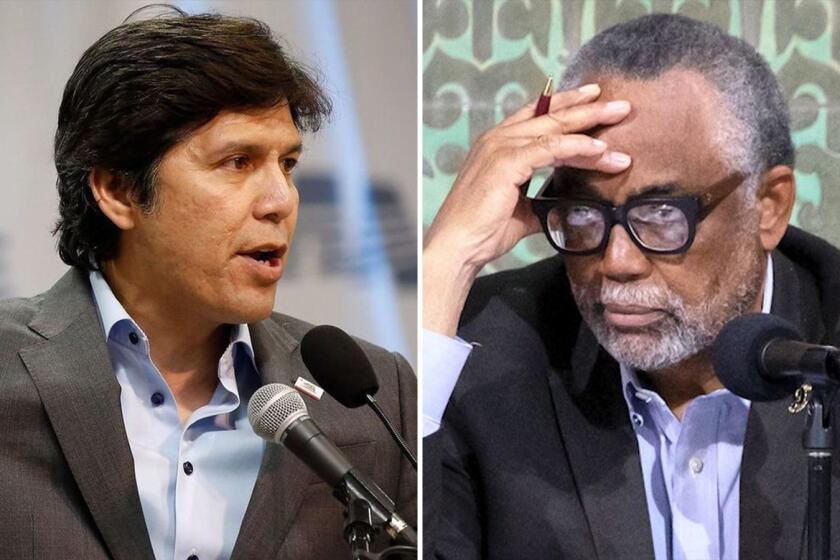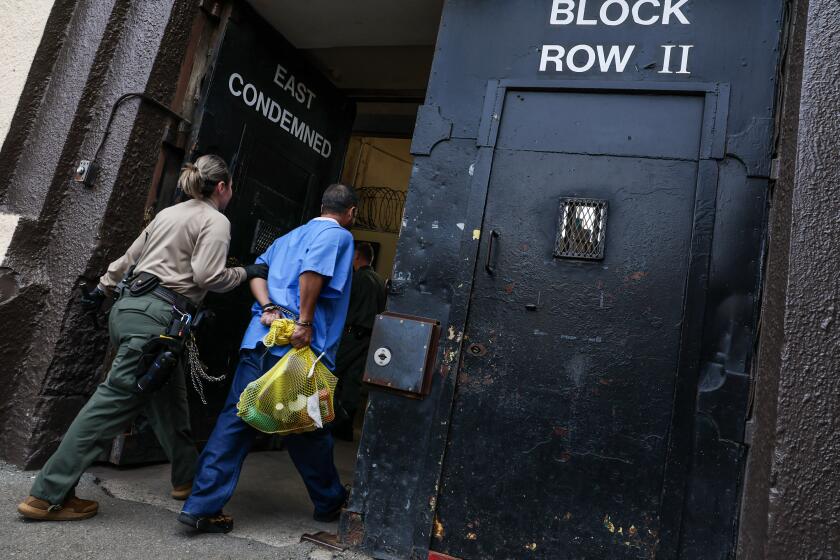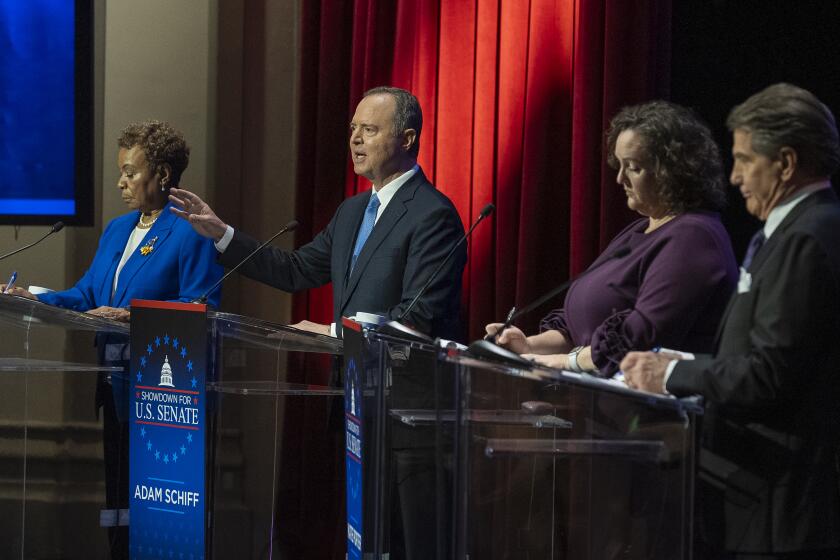City Panel Recommends Signing Pact on Valley Transit Zone
A stalled effort to wrest control of the Valley’s bus system from the MTA got a push forward Wednesday, when a City Council panel agreed that Los Angeles should sign a tentative pact with nine other jurisdictions to pursue an autonomous Valley Transit Zone.
The idea of a separate agency governing the Valley’s bus service has many supporters, including Mayor Richard Riordan, Valley Councilman Hal Bernson, and county Supervisor Zev Yaroslavsky, but action has been delayed as bureaucrats wrangle over the cost.
Councilman Mike Hernandez, among others, has questioned the move to break up the Metropolitan Transportation Authority’s control over the city’s buses, an effort that parallels secession movements in the Valley and the Los Angeles Unified School District.
“There’s a big question mark as to whether there would be cost savings,” Hernandez said Wednesday at a special meeting of the council’s Transportation Committee. The proposed Valley Transit Zone’s chief promise is cheaper, more efficient bus service than that provided by the MTA, the regional agency that funds public transit throughout the county.
For months, the city was the lone holdout among a group of nine other municipalities who joined forces to negotiate with the MTA. Without Los Angeles, the largest player in the proposed zone, the effort went nowhere.
Some supporters of the zone, such as Glendale Councilman Sheldon Baker, have suggested that progress slowed after former L.A. Councilman Richard Alarcon moved to the state Senate last year, leaving the council bereft of a strong champion of a Valley Transit Zone.
Last month, the city’s chief legislative analyst, Ron Deaton, yielded to pressure from Councilwoman Laura Chick and others, recommending that the city enter into an interim joint powers authority with the county and other cities. If the full council follows suit, L.A. will join Burbank, Glendale, La Canada Flintridge, San Fernando, Agoura Hills, Calabasas, Hidden Hills, Westlake Village and Los Angeles County in a bid to set up the zone.
The move would essentially give Los Angeles a seat at the bargaining table with the MTA. The interim agreement does not commit the city to participate in the zone, a decision the council could put off until it has more data about the costs.
“It’s a slow step in the right direction,” said Richard Katz, a former state assemblyman who co-chairs the Valley Industry and Commerce Assn.’s transportation committee. “They’re moving at a snail’s pace, but at least it’s progress.”
The Valley Transit Zone, first proposed two years ago, faltered as city and MTA officials debated just how much it would cost. The MTA says it would subsidize the new zone based on the hourly cost of Valley bus service--a number the agency’s accountants put at $69. City transit officials, however, say the figure is closer to $88 per hour.
The funding gap means that if the zone were to go forward under the MTA’s suggested subsidy, the city would stand to lose millions, according to a recent analysis by Deaton. He forecast that the city could face a $70-million shortfall over three years, warning that “unless the gap can be closed, creation of the zone is infeasible.”
Hernandez, who nonetheless voted to move ahead with the interim JPA, said the zone “sounds like the secession argument reversed. We’re saying it’s good for the Valley to have its own bus system, but we’re not saying it’s good for the rest of the city. . . . That’s what’s real troubling to me. If we’re going to be one city, we should treat everybody the same.”
Councilman Hal Bernson, the only Valley lawmaker on the Transportation Committee, said he supports the concept of a Valley Transit Zone but questioned whether it would truly save money. “From an economic point of view . . . I don’t see how the city can cover itself with the possibility of up to $70 million in additional costs,” he said.
To resolve the numbers issue, the lawmakers also agreed Wednesday to set aside $63,000 for a study of the MTA’s data. The rest of the cost of the $140,000 study would be divided by the other cities participating in the zone.
The MTA, for its part, supports a thorough review of its data, said Chief Operating Officer Allan Lipsky. He said much depends on variables such as whether bus drivers are paid at entry-level or higher rates, and the two sides may be closer to resolution than they think.
“The numbers that have been discussed are very preliminary,” Lipsky said. “They require a lot of cooperation and further analysis to determine what the right subsidy numbers are.”
More to Read
Start your day right
Sign up for Essential California for news, features and recommendations from the L.A. Times and beyond in your inbox six days a week.
You may occasionally receive promotional content from the Los Angeles Times.






